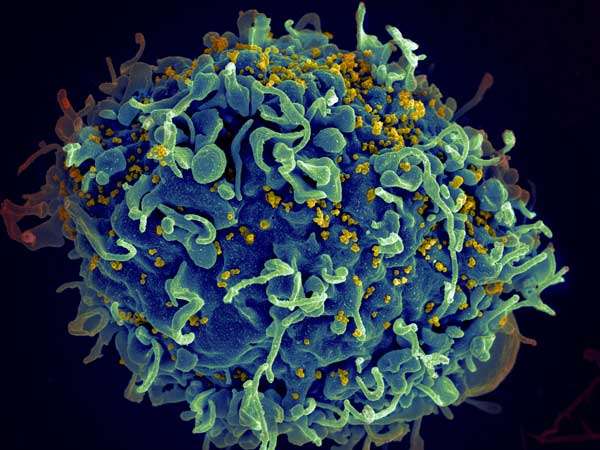Scientists overcome missing data to demonstrate ART effectiveness in HIV-infected infants

Recent clinical trials conducted in South Africa have established that babies born with HIV should be treated with antiretroviral therapy (ART) as early as possible, since earlier treatment significantly decreases their mortality and morbidity rates. However, scientists were unsure whether infants treated with ART eventually develop a "normal" immune system. Knowing how an infant reacts to ART could help determine how to design curative strategies, but studying these infants can prove challenging due to inconsistent adherence to the study's schedule and the difficulty of collecting sufficient specimens in infants.
Now, scientists from The Wistar Institute, in collaboration with the Center for Interdisciplinary Research on AIDS at Yale University, have demonstrated that the issue of missing data can be successfully overcome using appropriate statistical methods, and as a result, they were able to show how early initiation of ART in infants preserves an expansion of naïve T-cells and allows the infant's immune system to be properly reconstructed.
The results of the study were published in the journal PLOS ONE.
Children born with HIV who do not receive treatment with ART experience progressive immunodeficiency that can lead to death, and if they do survive, their immune cell levels can be permanently offset. These children have low levels of naïve CD4+ T-cells and other immune effectors. Studying the levels of immune cells in these infected infants could help scientists develop better treatment strategies.
Scientists struggle with the frequent issue of missing data when it comes to studying these infants. Blood samples taken from these infants are routinely used for monitoring their health and response to treatment. However, it is often difficult to collect larger volumes of blood for immunological studies. Additionally, in resource-constrained settings, many infants miss visits because their caregivers may be unable to get them to a central location where samples can be routinely taken.
"Despite the best efforts of pediatricians and pediatric nurses, insufficient samples and missed visits have been the norm for pediatric studies in developing countries," said Luis J. Montaner, D.V.M., D.Phil., Director of the HIV-1 Immunopathogenesis Laboratory and Herbert Kean, M.D., Family Professor at The Wistar Institute. "Loss of data lead to loss of statistical power, so it's extremely important to develop methods that allow us to analyze data sets where data are randomly missing."
To solve this issue, Dr. Montaner teamed with Dr. Russell Barbour from the Center for Interdisciplinary Research on AIDS at Yale University and an international team of scientists to determine which methods could successfully overcome data missingness in a dataset collected in the course of a study on HIV-infected infants. While numerous methods have been suggested to address this issue, many have intrinsic problems like not being able to anticipate change over time and artificially reducing standard error. The team settled on two approaches that they believed would effectively address missing data. The first, called the Multiple Imputation (MI) method, uses the observed values as well as different imputations - values that are substituted for missing data - to fill in these gaps while not changing anything else about the data. The second approach was based on a Bayesian model, which was used to create 5,000 "alternative" instances of the dataset based on the observed data.
A total of 66 HIV-infected or seronegative infants born of HIV-infected mothers were recruited at the Chris Hani Baragwanath Hospital in Soweto, South Africa. These infants were enrolled in the Children with HIV Early Antiretroviral Therapy (CHER) trial and randomized to receive ART either as soon as they were enrolled or when their CD4+ T-cell count dropped below 20 percent. Blood samples were taken once every six months.
The use of these statistical methods allowed Dr. Montaner and his collaborators to demonstrate that early ART treatment results in higher CD4+ T-cell frequency, lower cellular activation, and had higher proportions of naïve T-cells. These results suggest that in infants with perinatal HIV infection early treatment may improve the chances of developing a functional immune system.
"Our study offers a field-based proof of concept that certain type of data missingness can be tolerated without affecting the integrity of a study," Montaner said. "We hope this will encourage other scientists to target hard-to-reach populations, particularly in resource-constrained settings."
More information: Livio Azzoni et al. Early ART Results in Greater Immune Reconstitution Benefits in HIV-Infected Infants: Working with Data Missingness in a Longitudinal Dataset, PLOS ONE (2015). DOI: 10.1371/journal.pone.0145320
















